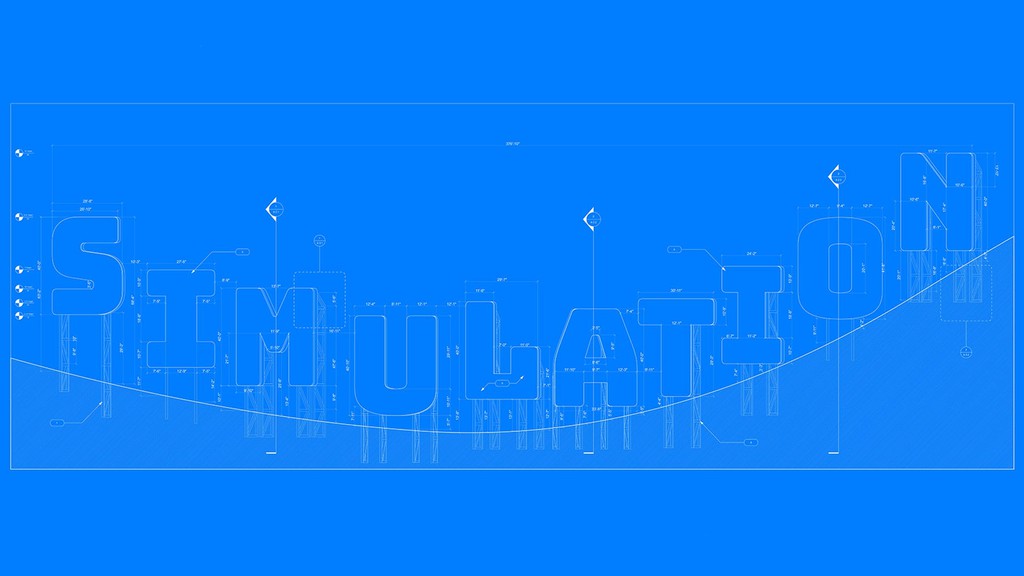
UCLA AUD Student Magazine POOL Issue No. 5: SIMULATION - Call for Submissions
Feb 20, 2020
UCLA Architecture and Urban Design's student magazine, POOL, has just announced the theme of their fifth print issue: SIMULATION.
Submissions are due by March 20, 2020.
Today we dwell in the world of simulation.
We experience it in the home, the park, the street, a torrent from hand-held gadgets transmitting the daily news and gizmos prophesying interplanetary ventures. It exists within the results of lucid experimentation: specifically curated ad prognostics, automobile test drives, data analytics. It exists within the screen, that ubiquitous object that lives in nearly every home and is cradled in nearly every palm, and maintains a phantom presence in our constructed environments. There is scarcely a thing in our realities that hasn't been touched by the deft hand of simulation.
Today we pay for the world of simulation.
The distilled world once available for the price of a Disney tickets has spread to our malls and streetscapes; we pay for the simulation of daily life (1). Plastic replaces our goods, surroundings, and cash itself; immersive experiences spring up in empty storefronts; machines remember your face as well as your dietary restrictions. Within this familiarity, the uncanny valley is manifested. The games are not all fun (while some play, others make do). In the domain of the hyperreal (2) lies dormant a potential for malevolence: military and defense strategies certainly attest to this.
Today we conceptualize the world through simulation.
It is the way in which we imagine new realities, unrestrained realms inserted into familiar contexts. We are less interested in the artifice of simulation than an acceptance of it as an authentic reality. No longer can the delineation between the two be stifled to a feint or falsity, mock-up or imitation. Welcoming this new and uncertain terrain, simulation surpasses old preconceptions to become independent and all-encompassing.
Today we cultivate in the world of simulation.
Illusory attributes are acknowledged and embraced. We begin the cursory plight of design with a tabula rasa: applications present a starting point where gravity is optional, lighting erratic, earth absent. In an electric world that is organized and illustrated through post-orthographic (3) means, simulations reign supreme: the old tools of the bygone age become relics. What can be learned from the artifacts of reality? (4) In the epoch of simulation, where the hangovers of our culture are in a virtual continuum of movement and progress, we live (5).
Submission Guidelines:
We accept essays, drawings, and other content endemic to academic publishing, but highly encourage unconventional media such as comics, experimental films, syllabi, etc. Please include a cover image or summary text (50 words maximum) to be used on the website as a thumbnail linking to your piece.
All body text should be 2,500 words or less, and submitted in the form of editable Word documents. All text, including footnotes, should be edited according to the Chicago Manual of Style, 16th edition. All images must be submitted as high-res .png or .jpeg, in RGB. Maximum acceptable file size is 20 MB, and max pixel width for display on POOL's website is 1500. Contributors are responsible for procuring the rights to any images they want to use. Video and audio can be submitted through an external site such as Soundcloud or Vimeo. We can also include links to other related documents.
All materials should be submitted digitally to pool@aud.ucla.edu.
More information at www.pool-la.com.
(1) Moore, Charles. "You Have to Pay for the Public Life: Selected Essays of Charles W. Moore." The MIT Press, 2004.
(2) Baudrillard, Jean, and Sheila Faria. Glaser. Simulacra and Simulation. Ann Arbor: University of Michigan Press, 2018.
(3) May, John. Signal Image Architecture: (Everything Is Already an Image). New York (N.Y.): Columbia books on architecture and the city, 2019.
(4) Brown, Denise Scott. "Learning From Pop." The Journal of Popular Culture VII, no. 2 (1973): 387-401.
(5) Smithson, Alison and Peter. "But Today We Collect Ads." ARK, November 1957.